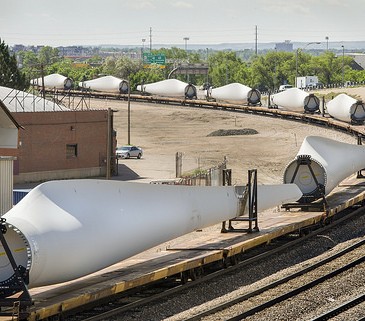LEDS in Practice: Use trade policy to realize the benefits of low emission development

Introduction
Low emissions development strategies (LEDS) are central to the mitigation of current and future greenhouse gas emissions, which if unchecked will accelerate climatic change and further exacerbate existing vulnerabilities, and thereby undermine efforts to adapt to climate change.
Trade and trade policies can contribute to shifting to a low emission economy by enabling more efficient use of resources and international exchange of climate friendly goods and services. One meaningful measure would be to remove tariffs and nontariff barriers to trade in clean energy and energy efficiency technologies. In a sector where finished products consist of many components that cross borders numerous times—a typical wind turbine, for example, contains up to 8,000 components—even small tariff cuts would reduce costs, making the technologies more affordable and competitive in the global market, particularly if combined with a phasing out of fossil fuel subsidies.
This would not only help mitigate climate change, but also enhance energy access and security, generate jobs in associated sectors, help build domestic low carbon industries, and spur innovation through competition in an open global market.
This publication*, which was produced in partnership with the International Centre for Trade and Sustainable Development (ICTSD), explores how low emission development can benefit trade and how trade benefits can be integrated into low emission policies and planning. It also presents a short case study on the World Trade Organisation’s Environmental Goods Agreement.
*download the full report form the right-hand column. The key messages from the report are provided below – see the full text for more detail and further resources.
Key Messages
-
Trade is a key tool for ensuring global access to the best available low emission goods and services at a competitive cost. Shifting to a low emission future also offers opportunities for trade, which in turn contributes to growth and development.
-
Trade can allow for efficient use of resources and enable a global shift from high to lower carbon products by increasing their availability.
-
Removing trade barriers for clean energy and energy efficiency technologies will foster innovation, scale up supply, and reduce costs, thus driving emissions reductions.
-
Low emission development, in turn, can increase resilience and competitiveness, create jobs, and generate new trade opportunities, driving sustainable development overall.
-
There is a need to strengthen the understanding, dialog, and collaboration between the climate and trade communities at the domestic and international levels to realize the potential of trade in the context of low emission development.
This paper is one of LEDS GP’s ‘LEDS in Practice’ series, from their Benefits Working Group, which presents the benefits of LEDS for resilience, trade, employment, health, energy security, industrial competitiveness, and gender equality.
The case studies were developed in cooperation with Conservation International, the International Centre for Trade and Sustainable Development (ICTSD), the International Labour Organization (ILO), the Energy research Centre of the Netherlands (ECN), the United Nations Industrial Development Organization (UNIDO) and the International Union for Conservation of Nature (IUCN), respectively.
Each factsheet highlights opportunities and challenges, and includes policy recommendations and lessons learned from case studies, as well as an overview of tools to assess and integrate benefits into LEDS and Nationally Determined Contributions (NDCs).
Find the other case studies here:
- Promote gender equality
- Boost ecosystem resilience
- Ensure energy security
- Create green jobs
- Gain the competitive edge
This series complements another set of ‘LEDS in Practice’ publications from our LEDS GP Transport Working Group, which highlight the social and economic benefits of low carbon urban transport (find out more here):
(0) Comments
There is no content